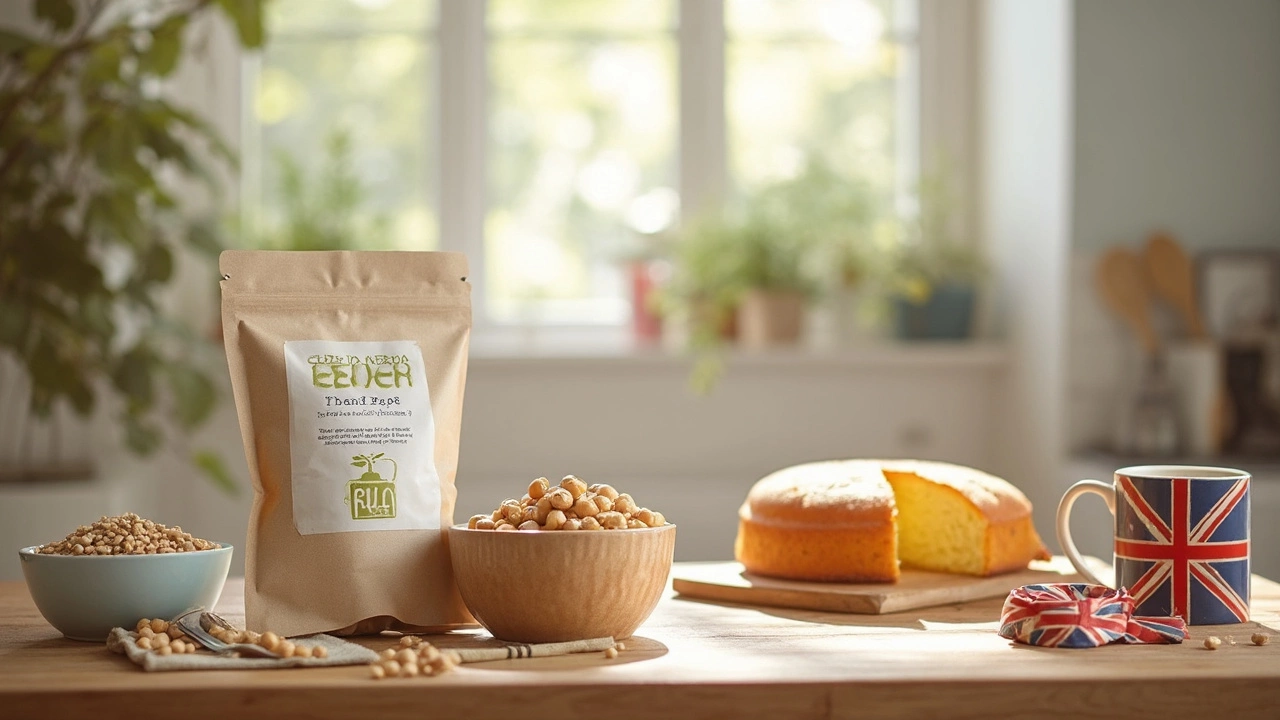
If you’re trying to bake gluten-free cakes, the question pops up fast: Do chickpeas have gluten? You’re not alone. Everybody wants to know if those humble little beans are safe for gluten-free baking or if they’ll mess up your careful diet.
Here’s the short answer—chickpeas are naturally gluten-free. That means you can use them plain, as flour, or even mashed up in your recipes without worrying about gluten sneaking in. This is a game changer if you’re used to skipping cakes because of gluten issues or celiac disease.
But before you grab a can or a bag of chickpea flour and start baking, there’s a little more you need to know. Sometimes the trouble isn’t in the chickpeas themselves, but in how they’re processed or packaged. Ever noticed the “may contain traces of wheat” warning on some bags? That’s cross-contamination, and it matters if you’re serious about being gluten-free.
- What Actually Is Gluten?
- Are Chickpeas Gluten-Free?
- Using Chickpeas in Gluten-Free Cakes
- Common Mistakes to Avoid
- Chickpea Cake Hacks and Recipe Ideas
What Actually Is Gluten?
Let’s keep it simple: gluten is a protein found in certain grains. It shows up mostly in wheat, barley, and rye. People love gluten for the way it makes dough stretchy—think pizza crust, bagels, and classic bread, all soft and chewy because of gluten. But if you need gluten-free cakes, gluten’s not your friend.
If you ever stared at a food label and spotted ingredients like wheat flour, semolina, spelt, or triticale, those all mean gluten is lurking inside. Here’s a quick list of grains with gluten:
- Wheat (all types, including spelt and durum)
- Barley
- Rye
- Triticale (a wheat/rye hybrid)
On the flip side, certain grains and beans are naturally gluten-free. This is where chickpeas step in. They don’t contain gluten at all, which makes them a safe choice for anyone skipping gluten—whether it’s for health reasons or just because they want a change.
Celiac disease, gluten intolerance, and wheat allergies all mean people need to watch out for gluten in every bite. It’s not just about bread—gluten can turn up in sauces, packaged foods, or even as a hidden ingredient in baking mixes. If you’re aiming for truly gluten-free cakes, double check every label.
To put it in perspective, about 1% of people worldwide have celiac disease, but way more avoid gluten for various reasons. Gluten is harmless unless you have a medical reason to skip it. For the folks who do, finding tasty, safe cake alternatives is a massive relief—and that’s where chickpeas save the day.
Are Chickpeas Gluten-Free?
The bottom line? Chickpeas don’t have gluten. They’re a type of legume, way different from grains like wheat, barley, or rye. These grains are the main sources of gluten—the protein that causes trouble for people with gluten intolerance or celiac disease. Chickpeas give you fiber and protein without any natural gluten involved.
But here’s the real issue: cross-contact. Not every bag of chickpeas or chickpea flour is totally safe. Sometimes they’re processed in factories that deal with wheat or other gluten-filled grains. Even tiny bits of gluten can sneak in this way, and that can cause problems for anyone who’s super sensitive.
If you’re really strict about gluten, check labels every time. You want packaging that says “gluten-free.” The label isn’t just for show—products with that stamp have to stay under 20 parts per million (ppm) of gluten, which is safe for most people on a gluten-free diet.
Some brands even send out allergy-testing reports to prove their chickpea products are safe. And here’s a fun fact: according to a 2022 study published in the Journal of Food Protection, about 90% of chickpea flour brands labeled “gluten-free” actually tested under 10 ppm of gluten, way below the legal standard. That’s why double-checking pays off.
So yes, you can use chickpeas or chickpea flour for gluten-free cakes. Just be smart about labels and sourcing. When you see “gluten-free” on a brand you trust, you’re good to go.
- Look for certified gluten-free marks on bags or cans.
- If buying in bulk, ask about cross-contact risks.
- Always wash dried chickpeas well before cooking, just in case.
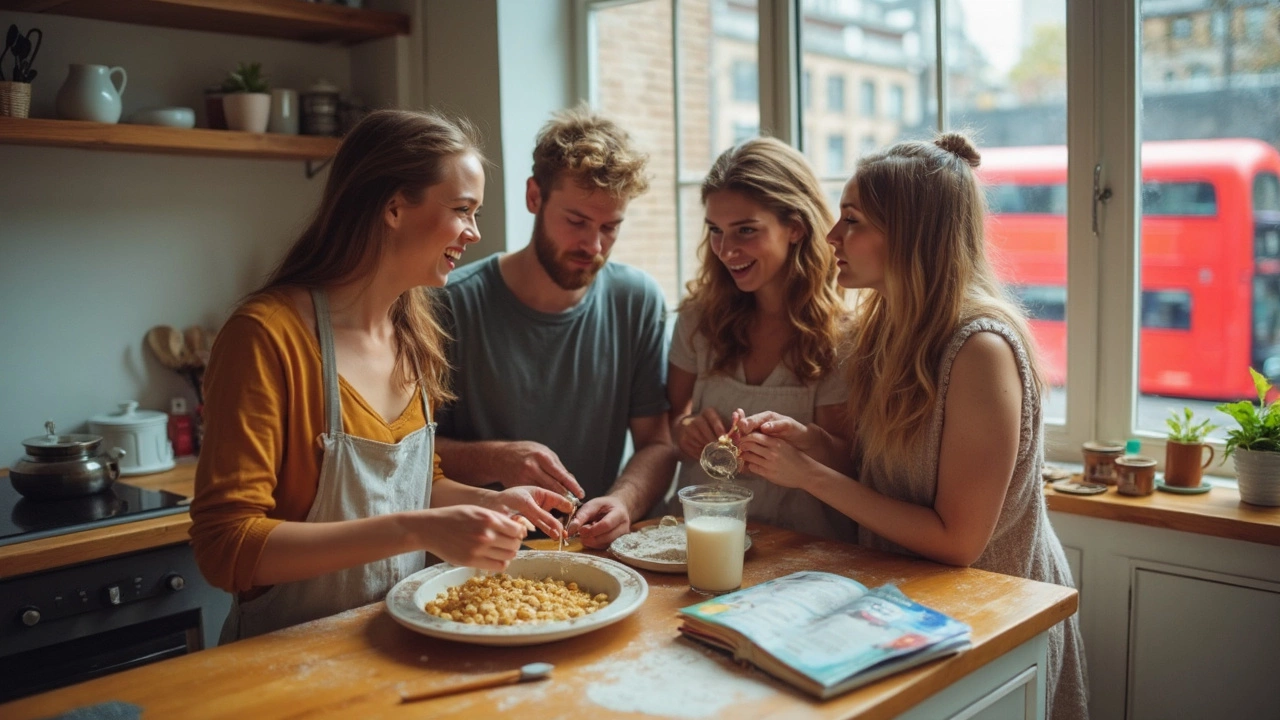
Using Chickpeas in Gluten-Free Cakes
It might surprise people, but chickpeas pop up in all kinds of gluten-free cake recipes. Some use chickpea flour, also known as gram or besan flour, while others blend up whole cooked chickpeas to make the batter super moist. Chickpeas replace both wheat and other grain-based flours, bringing tons of flexibility for folks who can’t have gluten.
Here’s how chickpeas help your gluten-free bakes:
- Chickpea flour gives cakes structure without making them dense or gummy. It has a slightly nutty flavor that works best with chocolate, lemon, or strong spices.
- Whole chickpeas, when pureed, add moisture and protein while still keeping textures cake-like and light.
- Chickpeas bind ingredients together, sort of like eggs do, which is a big help if you’re baking vegan or egg-free too.
If you’re just starting out, you might want to swap about 1:1 for regular flour, but every recipe is a little different, so expect some trial and error. Most gluten-free cake recipes with chickpeas swap in about 1 cup chickpea flour for 1 cup wheat flour, though sometimes you’ll blend different flours for better texture.
Want to see how chickpeas stack up? Here’s a quick look at their nutrition compared with wheat flour—per 100 grams:
| Nutrient | Chickpea Flour | Wheat Flour |
|---|---|---|
| Protein | 22g | 10–12g |
| Fiber | 11g | 3g |
| Gluten | 0g | 8–14g |
Just remember, chickpea flour can taste a little earthy if it’s raw, but once baked into a cake with cocoa or spices, most people don’t even notice. If you ever buy premade mixes, double-check the label so “gluten-free” really means what you think. Some brands process chickpeas alongside wheat, risking cross-contact.
For the best results, try these tips:
- Sift chickpea flour before adding to batter—clumps can be a real pain.
- Pair with sweeteners and strong flavors. Think banana, chocolate, orange, or coffee.
- If using canned chickpeas, rinse them well to ditch any salty taste.
Once you’ve tried it, don’t be surprised if you look at chickpeas in a whole new way. They’re not just for hummus anymore—they’re the secret to making gluten-free cakes you actually want to eat.
Common Mistakes to Avoid
Baking with chickpeas for gluten-free cakes sounds easy, but there are some common mistakes that can trip you up—and nobody wants to end up with a cake that tastes weird or isn’t safe for folks watching their gluten.
The biggest blunder? Grabbing chickpeas or chickpea flour that isn’t labeled gluten-free. Even though chickpeas themselves have no gluten, sometimes they’re processed in facilities that handle wheat. Cross-contamination is real. Always look for packages that clearly state “certified gluten-free,” especially if you have celiac disease or a strong intolerance.
Another mistake is not rinsing canned chickpeas well. The liquid (aquafaba) sometimes contains salt, preservatives, or traces of gluten if processed with other products. Rinse them under water for at least 30 seconds before mashing or blending.
- Check all your baking ingredients for hidden gluten—think baking powder, chocolate chips, and vanilla extract. You’d be surprised where gluten hides.
- Don’t just swap regular flour for chickpea flour one-to-one in every recipe. Chickpea flour is denser and has a stronger flavor. You might need to mix it with other gluten-free flours for the best texture and taste.
- Test your batter before baking. Because chickpeas have more moisture, your cake might turn out gummy if you don’t adjust liquids or bake time.
Here’s a quick comparison to show just how much care matters when choosing your main ingredient:
| Product | Gluten Content | Certification Needed? |
|---|---|---|
| Canned chickpeas (unlabeled) | May contain trace gluten | Yes |
| Bags of dry chickpeas | Usually gluten-free, but check label | Recommended |
| Chickpea flour (certified GF) | Gluten-free | Yes, for allergy safety |
Bottom line: Always double-check labels, rinse your beans, and don’t assume that what works for wheat flour will work for chickpeas. Getting the details right means safer, tastier gluten-free cakes every time.
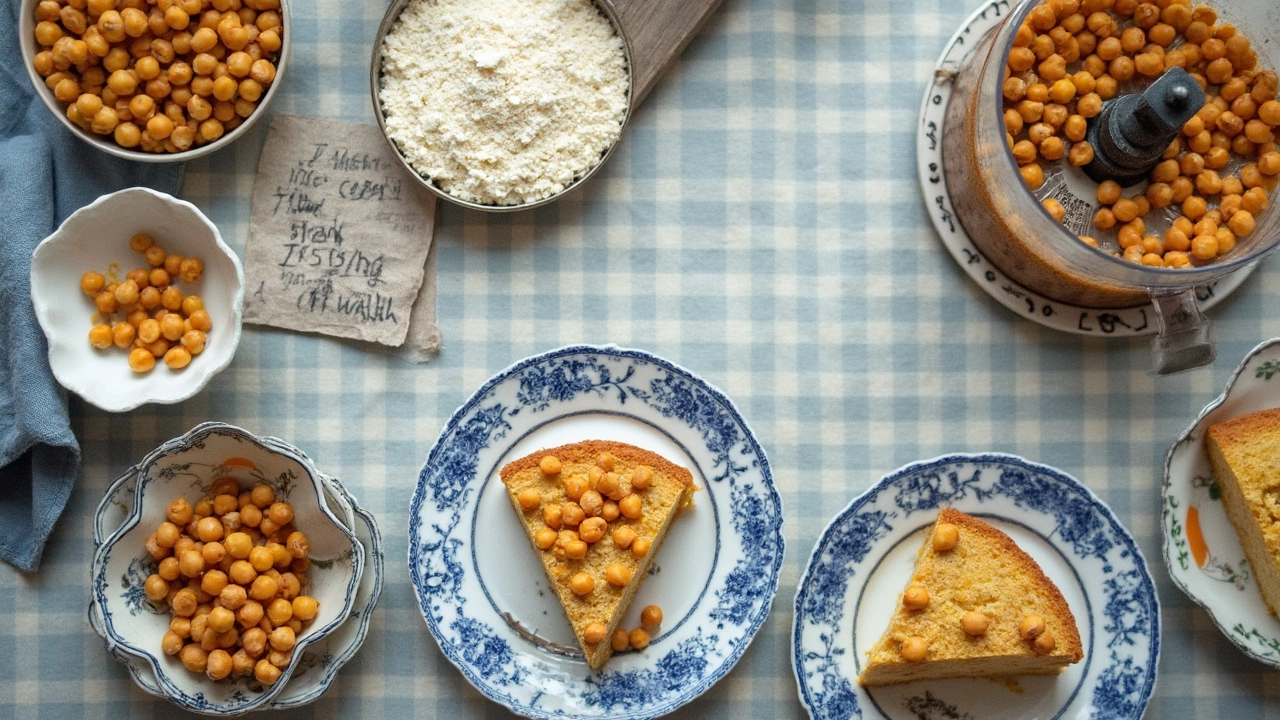
Chickpea Cake Hacks and Recipe Ideas
Using chickpeas for gluten-free cakes isn’t just a fad—these little beans can level up your baking, especially if you or your family can’t eat gluten. Since chickpeas have a mild flavor and a slightly dense texture, they work great as a stand-in for traditional flour. Plus, they bring extra protein and fiber, which isn’t common in your usual cake mix.
If you want to go basic, swap out wheat flour in your cake recipe with chickpea flour at a 1:1 ratio. Chickpea flour holds together nicely in most cakes and brownies, so you probably won’t need any wild extra ingredients. For chocolate cakes, the chickpea flavor hides away behind the cocoa, making it basically invisible to anyone eating it. People are always surprised when I tell them my classic chocolate cake is made with chickpeas!
For those who don’t have chickpea flour, try using drained, rinsed canned chickpeas. Toss them straight into a blender with the wet cake ingredients. The result? Cakes that are super moist and just a little more filling than usual. If the batter seems a bit thick, adding an extra egg or milk splash does the trick.
- Blend 1 can (about 400g) of chickpeas with three eggs, ½ cup sugar, ½ cup oil, 2 tsp baking powder, and the flavors or add-ins you want—think cocoa powder, lemon zest, or vanilla, then bake at 350°F (175°C) for 30–40 min.
- If you want a nutty taste, try roasting chickpea flour for a few minutes in a dry pan before mixing. It gets rid of that "bean" taste.
- Chickpeas make muffins, brownies, and even pancakes gluten-free if you swap out regular flour. You can even sneak them into birthday cakes for picky kids—they’ll never notice.
- Want it fluffier? Add ½ teaspoon xanthan gum or a tablespoon of cornstarch to give the cake a softer crumb, especially when using only chickpea flour.
Here’s a quick look at how chickpea flour compares nutritionally to regular wheat flour:
| Per 100g | Chickpea Flour | All-purpose Wheat Flour |
|---|---|---|
| Protein | 22g | 10g |
| Fiber | 11g | 2.7g |
| Gluten | 0g | Yes |
Last tip: no matter the recipe, always double check that your add-ins (like baking powder or chocolate chips) are labeled gluten-free. Sometimes wheat hides where you’d least expect it. But honestly? Once you get the hang of baking with chickpeas, you may not even miss the old stuff.


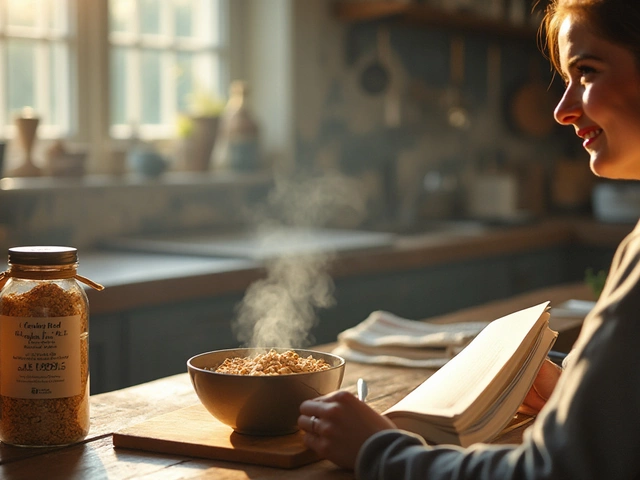
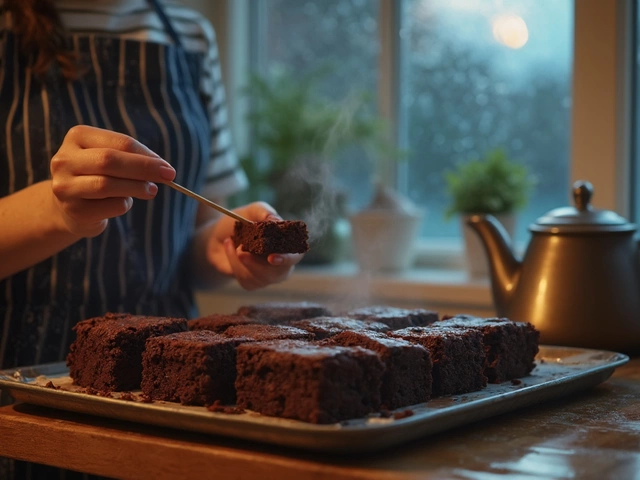
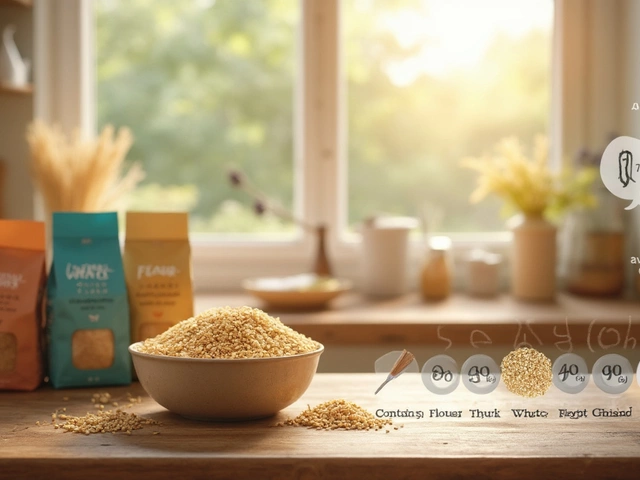
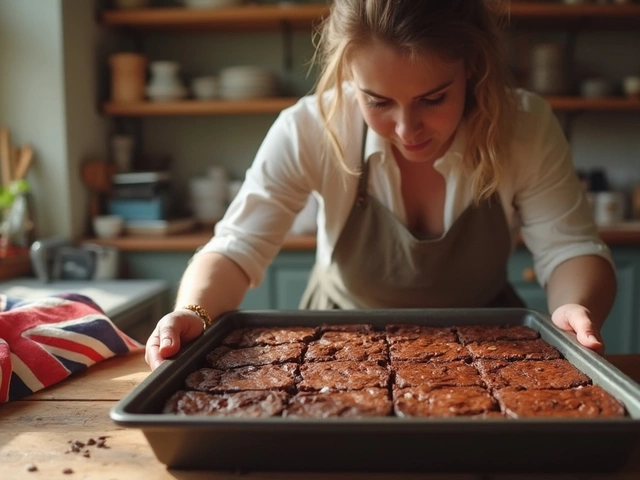
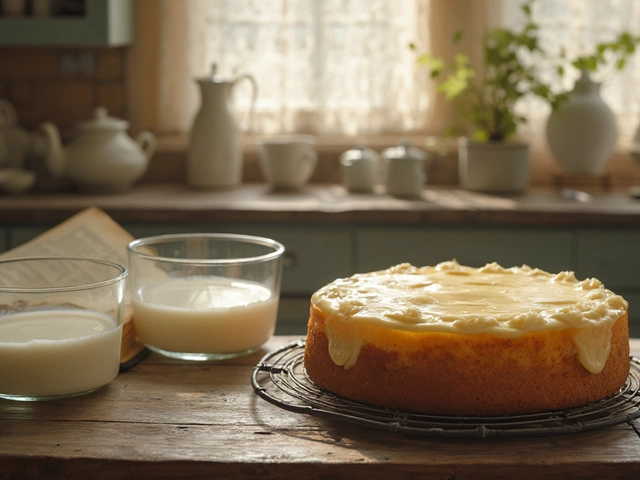


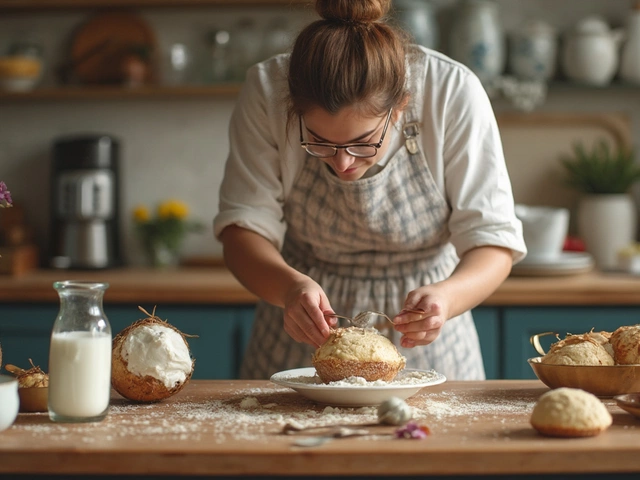
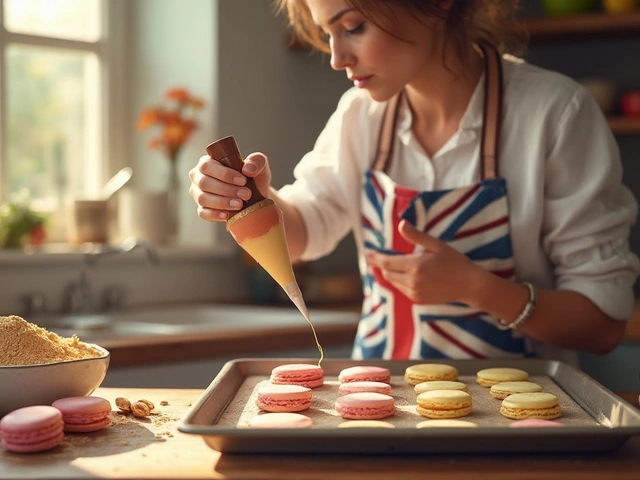

Write a comment